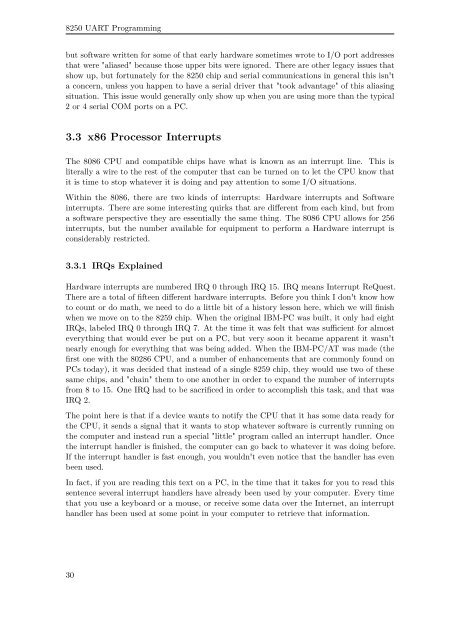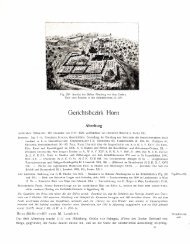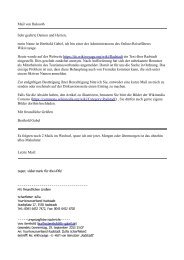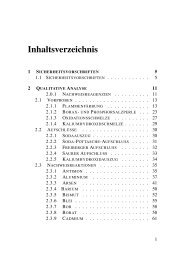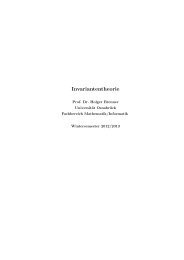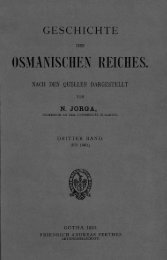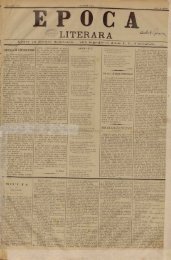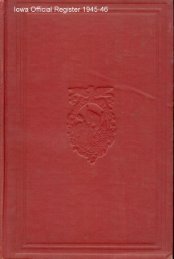Serial Programming - upload.wikimedia....
Serial Programming - upload.wikimedia....
Serial Programming - upload.wikimedia....
Create successful ePaper yourself
Turn your PDF publications into a flip-book with our unique Google optimized e-Paper software.
8250 UART <strong>Programming</strong><br />
but software written for some of that early hardware sometimes wrote to I/O port addresses<br />
that were "aliased" because those upper bits were ignored. There are other legacy issues that<br />
show up, but fortunately for the 8250 chip and serial communications in general this isn't<br />
a concern, unless you happen to have a serial driver that "took advantage" of this aliasing<br />
situation. This issue would generally only show up when you are using more than the typical<br />
2 or 4 serial COM ports on a PC.<br />
3.3 x86 Processor Interrupts<br />
The 8086 CPU and compatible chips have what is known as an interrupt line. This is<br />
literally a wire to the rest of the computer that can be turned on to let the CPU know that<br />
it is time to stop whatever it is doing and pay attention to some I/O situations.<br />
Within the 8086, there are two kinds of interrupts: Hardware interrupts and Software<br />
interrupts. There are some interesting quirks that are different from each kind, but from<br />
a software perspective they are essentially the same thing. The 8086 CPU allows for 256<br />
interrupts, but the number available for equipment to perform a Hardware interrupt is<br />
considerably restricted.<br />
3.3.1 IRQs Explained<br />
Hardware interrupts are numbered IRQ 0 through IRQ 15. IRQ means Interrupt ReQuest.<br />
There are a total of fifteen different hardware interrupts. Before you think I don't know how<br />
to count or do math, we need to do a little bit of a history lesson here, which we will finish<br />
when we move on to the 8259 chip. When the original IBM-PC was built, it only had eight<br />
IRQs, labeled IRQ 0 through IRQ 7. At the time it was felt that was sufficient for almost<br />
everything that would ever be put on a PC, but very soon it became apparent it wasn't<br />
nearly enough for everything that was being added. When the IBM-PC/AT was made (the<br />
first one with the 80286 CPU, and a number of enhancements that are commonly found on<br />
PCs today), it was decided that instead of a single 8259 chip, they would use two of these<br />
same chips, and "chain" them to one another in order to expand the number of interrupts<br />
from 8 to 15. One IRQ had to be sacrificed in order to accomplish this task, and that was<br />
IRQ 2.<br />
The point here is that if a device wants to notify the CPU that it has some data ready for<br />
the CPU, it sends a signal that it wants to stop whatever software is currently running on<br />
the computer and instead run a special "little" program called an interrupt handler. Once<br />
the interrupt handler is finished, the computer can go back to whatever it was doing before.<br />
If the interrupt handler is fast enough, you wouldn't even notice that the handler has even<br />
been used.<br />
In fact, if you are reading this text on a PC, in the time that it takes for you to read this<br />
sentence several interrupt handlers have already been used by your computer. Every time<br />
that you use a keyboard or a mouse, or receive some data over the Internet, an interrupt<br />
handler has been used at some point in your computer to retrieve that information.<br />
30


